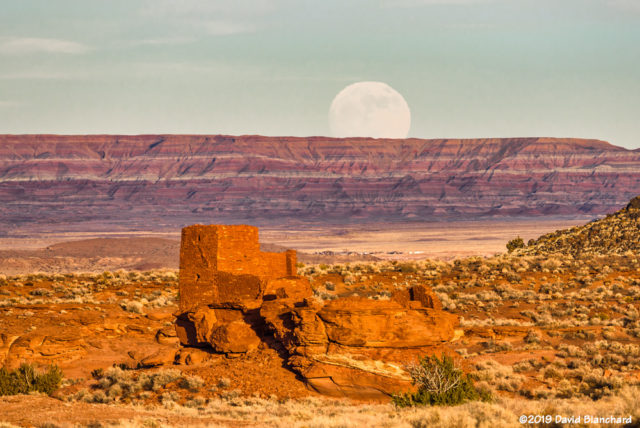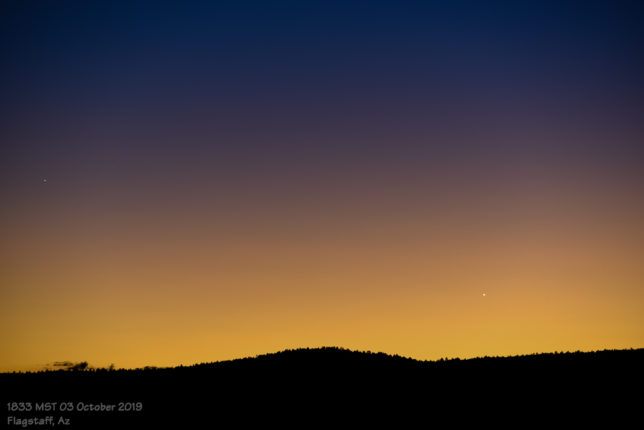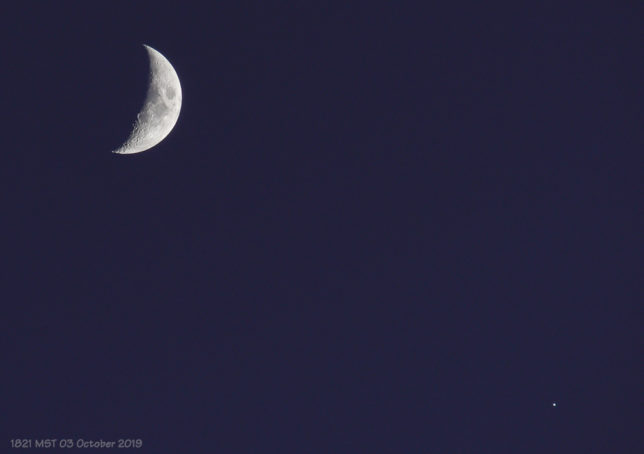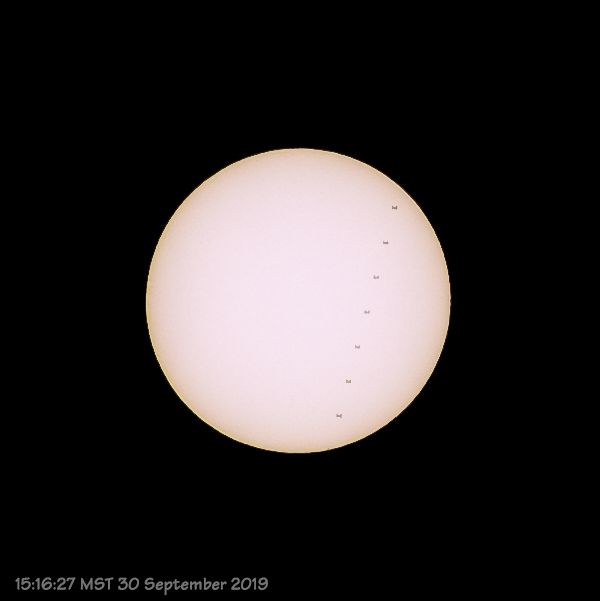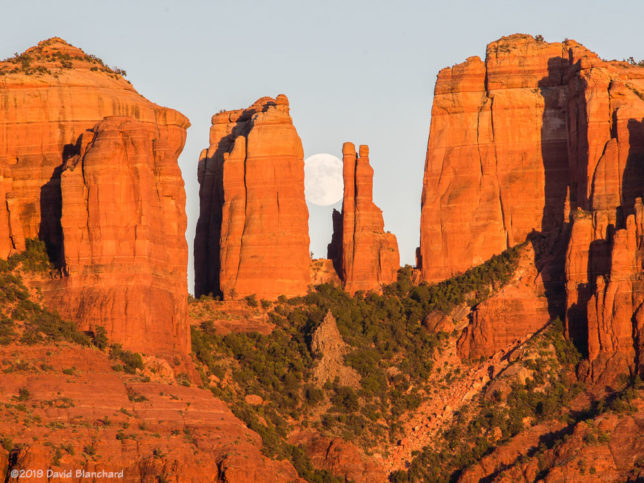The past few weeks have offered numerous opportunities for photographing objects in the twilight and night sky.
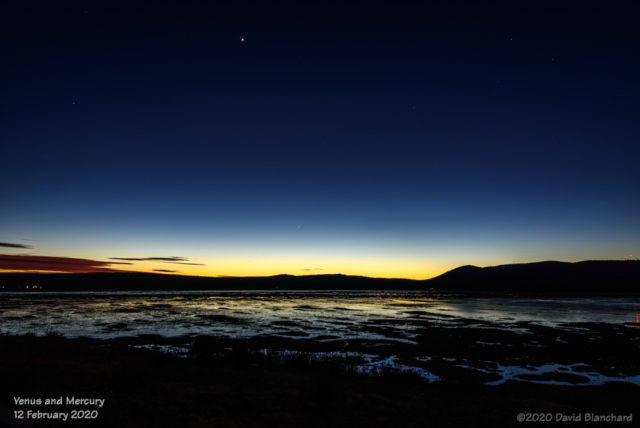
Above is a photograph showing the planets Venus (visible near the top of the image) and Mercury (located just below the center of the image). The glow of evening twilight on the horizon is reflected in the shallow waters of Mormon Lake.
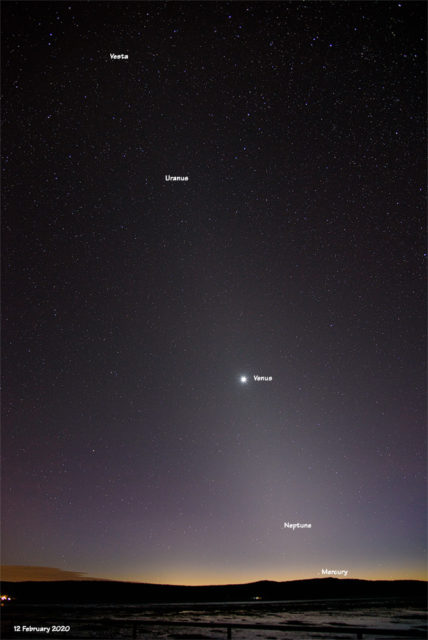
Taken later on the same evening is a photograph showing four planets and an asteroid in a single frame. This was taken with a 24mm focal length lens to capture these solar system objects (SSO). I did this as a fun test to see if a wide-angle lens was able to capture these dim and distant SSOs. From top to bottom are the asteroid Vesta, Uranus, Venus, Neptune, and Mercury.
Zoomed-in crops (below) show the dimmer objects that are in the image above.

Before leaving that night I did a final wide-angle shot of the southeastern sky which included the constellation Orion as well as a portion of the winter Milky Way.
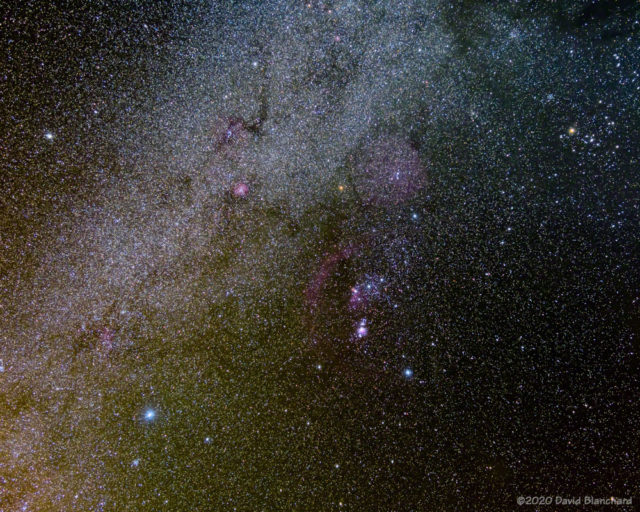
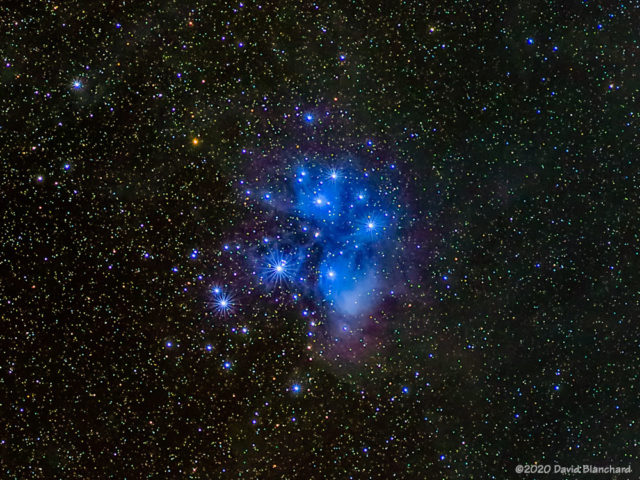
The following night I was out again to test my recently purchased Nikon 180mm ƒ/2.8 ED AIS manual focus lens. A few previous tests have shown that star images are pretty good at an aperture of ƒ/2.8 but much better at ƒ/4. At ƒ/2.8 there is just a hint of star spikes; at ƒ/4 they are quite prominent. This is a stacked sequence of images of the Pleiades star cluster. Image stacking was done with Starry Sky Stacker; histogram stretching was done with rnc-color-stretch.
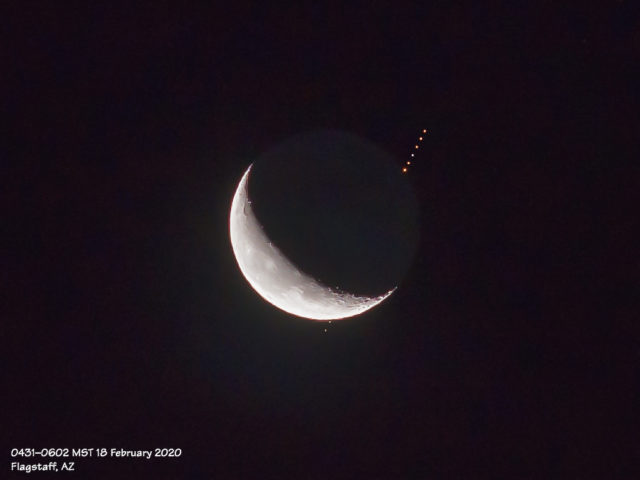
On 18 February there was a Lunar occultation of the planet Mars. I had planned to get up early and drive to a dark location but an alarm failure meant I barely had time to get up and set up the gear on the rear deck of the house to start the sequence. Luckily, Flagstaff is a Dark Sky City and it was dark enough to get the shots. This is a sequence from just a few minutes before the Moon moved in front of Mars followed by a longer sequence after it reappeared.
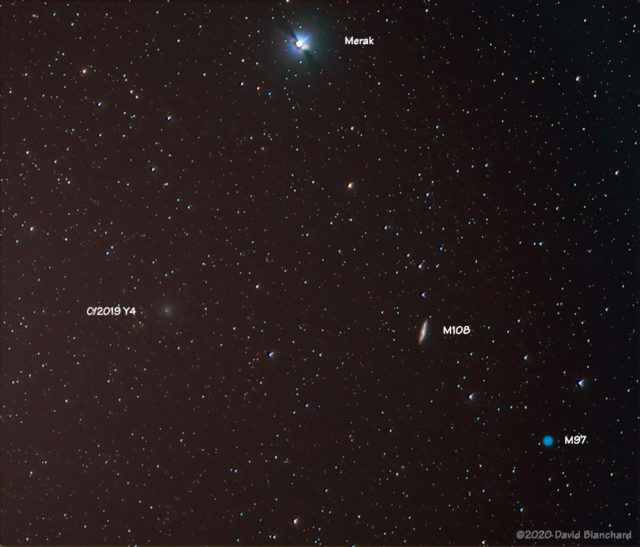
Finally, Comet C/2019 Y4 (ATLAS) is in the northern sky making it an easy target—except that it is still very dim with a magnitude of about +12 at the time of this image. The still image is a stack of 49 images each 120 seconds duration at ISO 1600, 180mm, and ƒ/2.8. As noted above this lens is pretty good at ƒ/2.8 but better at ƒ/4. Because the comet is so dim I wanted the maximum light gathering ability so settled for an aperture of ƒ/2.8. Also in the image is M97 (“Owl Nebula”) and M108 (“Surfboard Galaxy”). The star Merak is part of the “Big Dipper.”
Also, there is an animation—made from the same images—showing the movement of the comet over a period of just under 2 hours.
